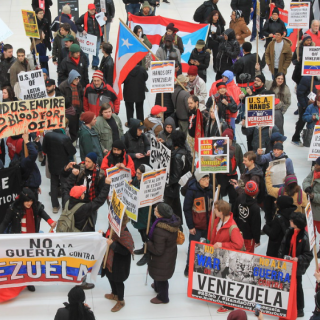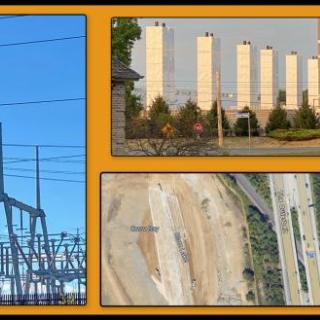Advertisement
We sat an outdoor platform in Nassjo, Sweden, awaiting the train that would take us to Arlanda Airport in Stockholm for our return flight to Texas. I had attended a professional conference there, and my wife had explored the city more thoroughly than my time allowed. Afterwards, we explored Scandinavia, wandering to Gothenburg, Copenhagen, and to my great-grandparents birthplaces in Smaland in Central Sweden. The morning train from Växjö to Nassjo had lasted about an hour, and we were enjoying the late summer afternoon, only to be interrupted by a barrage of text messages.
“You should call or text someone about your house; horrible flooding and people evacuating” The texts were variations on that theme. My brother returned my call with news that “things didn’t look good.” Anxiety prevailed for 24 hours. It was worse than we feared, damage that 18 inches of standing water would produce; outdoor furniture washed downstream, never to be seen; damaged photographs and pictures stored in closets, never to be hung; papers in our study drawers, illegible by mud stains.
It was the first chapter of a 6 month story of restoration, enduring lessons about preparation for nature’s perils, and permanent gratitude for basics – food, shelter, clothing, and family.
Tropical storm Hermione arose in the eastern Pacific, traversed Mexico, and entered the Gulf of Mexico before circling into South Texas and beginning a slow trek north, paralleling I-35. As night settled in and citizens were heading to bed, the storm paused about15 miles west of our village, dumped 12 inches of rain in an hour, and filled headwaters of a large creek that bisected our town. Flood water submerged the main street bridge and intruded into over 30 homes that lay near the creek. In our cul-de-sac, 200 yards south of the creek, authorities knocked on doors and alerted folks to leave; stories of neighbors carrying others to safety abounded. As we were en route home, a neighbor arranged for restoration services to begin the clean-up and first phases of our restoration.
We arrived home to a beehive of activity. FEMA set up shop in town, but we didn’t avail ourselves of their services. Aware that a tiny portion of our property was within a 100 year flood zone, we had purchased flood insurance through the National Flood Insurance Program; fortunately, this insurance reimbursed us for a substantial, but not total, cost of our renovation and content replacement. For the next six weeks, a nearby suite hotel would be our home. A small area of our renovation was completed and we returned, thankful for the grace of shelter, clothing, and food. For six months we became accustomed to life with clothes on portable racks and meal preparation by convection microwave or electric skillet. For the next fourteen years, after our routines expanded into renovated digs, we resumed an ordinary life of professional work, travel, hobbies, and eventual retirement. The threat of another flood daily loomed in the recesses of our mind and heart, and we monitored the FEMA flood zone map of our neighborhood at least annually. At least we had flood insurance.
A year before our dance with disaster, a professional move had provoked our relocation to that village. After retirement, we intended to return to the city where we’d spent the decades of living and raising our family. Six weeks ago, that intent was realized, and we rejoiced being in a comfortable spot on high ground near familiar haunts and among lifelong friends. The looming specter of flood water and the necessity of flood insurance had vanished. But on the morning of July 4, we learned of our two degrees of separation from two young girls who were swept away from Camp Mystic, an idyllic place that daughters of friends had attended. And as our community, state, and nation waited, thought, and prayed, a nefarious beast reared its head. A familiar combination of fear and sorrow reentered our hearts.
It took less than 48 hours for political accusations to spew forth. Since 2005, our federal government agencies have become the readymade scapegoats for calamity – both natural and humanly engineered. It is a bipartisan undertaking. In September 2005, six weeks after Hurricane Katrina, we attended a lecture by the late historian/author, David McCullough, who discussed 1776, his book published earlier that year. At the conclusion, an audience member asked him to compare the events following Hurricane Katrina, which had occurred just weeks earlier, to those recounted in McCullough’s first book, The Johnstown Flood: The Incredible Story Behind One of the Most Devastating Disasters America Has Ever Known. McCullough was silent for uncomfortable moments, finally responding that, since he was in a favorite locale and in front of a friendly crowd, he would provide his first comment on Katrina. In the weeks between Katrina and the lecture, he had been approached by several major news outlets for his opinions. He revealed that he informed them that it was too early and that providing a proper account required a longer view. But on that day, he was ready to talk.
He discoursed on how the Katrina early warnings, emergency responses, media coverage and political aftermath were an eerie replay of the Johnstown disaster 116 years before. He reminded the rapt audience that both events demonstrate the perils of nature, and that New Orleans was located at a unique confluence of circumstance and geography: a very strong hurricane, a vulnerable city at sea level, and a location near the mouth of the largest North American river. His point was made; no one, media of all types included, can do an “after action” report until history allows adequate facts to be gathered.
As persons familiar with the aftermath of natural disaster and with knowledge of our local flood risk geography, there are certainly questions to be raised. Were the persons swept away staying within known high risk flood areas? Despite the documented acceleration of National Weather Service warning regarding time and potential intensity of flooding, were alarms not rendered or the summer camps notified? If not, why? But if our communities are unwilling to accept necessary change for future safety, are we wasting our breath? I think McCullough might suggest that everyone on any media outlet “Wait a beat or two …before you spew.”
On our return flight from Sweden, we encountered an unknown, the uncertainty of anticipatory grief and fear. During the past three days, the parents and families of those swept away have become members of this undesired club. It defies description. Yesterday, many Christian churches who share a Common Lectionary encountered scripture proclaiming joy. The reconciliation of joy with sorrow and grief has always been a conundrum for believers; it is something that most of us eventually encounter. We heard a homily that brilliantly exposed the simplicity of showing up to be present and letting only your heart speak, not your mouth.
So, we as remember the flood of our past during this flood of our present, old emotions and human traits are reawakened. How should be respond, both individually and collectively? We’ll take some wisdom from an author and a priest:
“Wait a beat or two!” and “Show up and shut up!”
------------------------
A native Texan, Allan Anderson is a retired cardiologist and an occasional writer.



